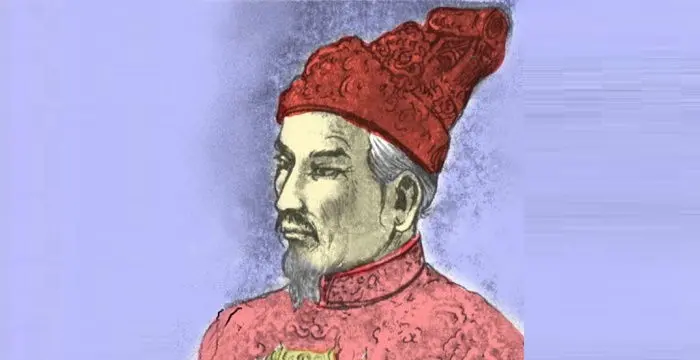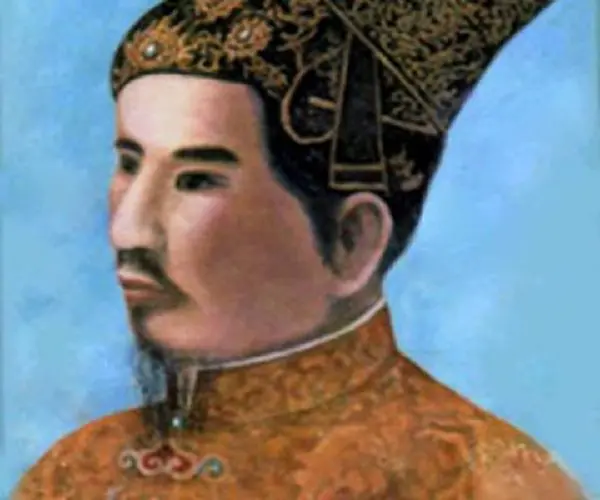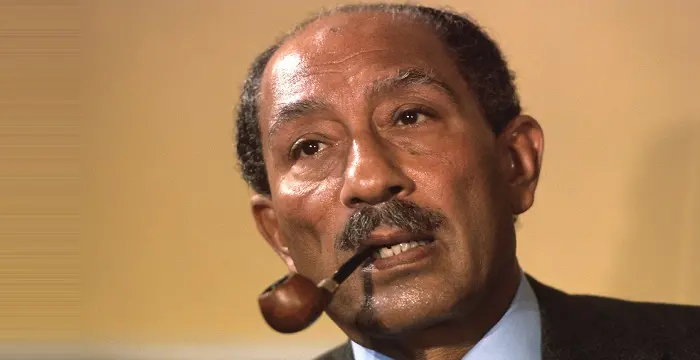
Gia Long - Emperors, Timeline and Facts
Gia Long's Personal Details
Gia Long was the first emperor of the Nguyen dynasty as well as the founding father of the modern nation of Vietnam
| Information | Detail |
|---|---|
| Birthday | February 8, 1762 |
| Died on | February 3, 1820 |
| Nationality | Vietnamese |
| Famous | Historical Personalities, Emperors & Kings, Leaders, Emperor of the Nguyễn Dynasty of Vietnam, Emperors, Kings |
| Spouses | Lê Ngọc Bình, Thuận Thiên, Tống Thị Lan |
| Siblings | Nguyễn Phúc Hạo |
| Known as | Nguyen Anh |
| Childrens | An Nghia Ngoc Ngon, Minh Mạng, My Khue Ngoc Khue, Nguyễn Phúc Cảnh, Nguyen Phuc Chan, Nguyen Phuc Chieu, Nguyen Phuc Cu, Nguyen Phuc Dai, Nguyen Phuc Quan |
| Founder / Co-Founder |
|
| Birth Place | Hue |
| Gender | Male |
| Father | Nguyễn Phúc Luân |
| Mother | Nguyen Thi Hoan |
| Sun Sign | Aquarius |
| Born in | Hue |
| Famous as | Emperor of the Nguyễn Dynasty of Vietnam |
| Died at Age | 57 |
// Famous Kings
Sundiata Keita
Sundiata Keita was the founder of the Mali Empire in West Africa. This biography profiles his childhood, early life, struggles, founding of empire, rule, administration, achievements and also gives some fun facts.
Ashoka
Ashoka was the third emperor of the Mauryan Dynasty and ruled almost the entire Indian subcontinent. This biography profiles his childhood, life, reign, achievements and timeline
Murad IV
Murad IV was one of the mighty Sultans in the history of the Ottoman Empire. This biography profiles his childhood, family, accession, rule, administration and timeline.
Gia Long's photo
Who is Gia Long?
Gia Long was the first emperor of the Nguyen dynasty as well as the founding father of the modern nation of Vietnam. Born as Nguyen Phúc Anh, he was the nephew of the last Nguyen lord who ruled over southern Vietnam. In spite of being born into a royal family, he had to encounter many difficulties in his early life as he became the target of rival groups who attempted to wipe out the Nguyen clan completely. After the deaths of his father and uncle at the hands of the rival leaders, Nguyen Phúc Anh fled to the southern coastal tip of Vietnam where by chance he met a French priest, Pigneau de Behaine, who would eventually become his trusted adviser and play a major role in his rise to power. He escaped with the help of the priest and later on sought aid from the French in his struggle against his rivals. With the help of the French, and equipped with advanced European armaments, he was successful in securing victories over his rivals. He declared himself the emperor, assuming the title Gia Long. He gave his country its modern name, ‘Vietnam’, and for the first time in centuries, the nation was united and free of outside control. He was a cautious ruler, a devoted follower of the teachings of Confucius and a great admirer of Chinese culture
Childhood & Early Life
Gia Long was born as Nguyen Phúc Anh on 8 February 1762 as the son of Nguyễn Phúc Luân and Nguyen Thi Hoan.
His father was the designated heir of Lord Nguyễn Phúc Khoát of southern Vietnam. However, the Khoat’s will of succession was changed when he was in his deathbed and instead Luan’s younger brother Nguyễn Phúc Thuần ascended the throne in 1765.
His father Luan was then arrested and killed. His uncle Thuan too lost his position as the lord of southern Vietnam soon and was killed during the Tay Son rebellion led by his rivals in 1777. Several members of the ruling family were killed, and Nguyen Anh was one of the few members to have survived this assault.
Fearing for his life, the young Nguyen Anh fled to Ha Tien on the southern coastal tip of Vietnam. Here he had the good fortune of meeting Pigneau de Behaine, a French priest who became his adviser and helped him escape from his enemies.
Later Life
Nguyen Anh escaped to the island of Pulo Panjang in the Gulf of Siam with the help of the priest. The priest was a Catholic who hoped that in the future Nguyen would help him expand the Catholic Church in South East Asia.
Nguyen Anh contemplated asking for aid from European forces and considered soliciting help from the English, Dutch, Portuguese and Spanish. However, Pigneau advised him against seeking help from the Dutch and thus Nguyen Anh asked the priest to appeal for French aid.
Pigneau enlisted French volunteers and managed to procure several shipments of arms and munitions. Meanwhile Nguyen Anh assembled his forces at home and abroad, and when Pigneau arrived, he managed to consolidate his hold on southern Vietnam.
The French officers trained Nguyen Anh’s forces in modern warfare and introduced them to Western technology to be used in the war effort. Some of the French officials, including Jean-Marie Dayot and Olivier de Puymanel were instrumental in constructing naval vessels and fortifications.
While the French officers trained his armed forces, Pigneau, and other missionaries helped purchase munitions and other military supplies for the army. The French priest also advised him on important matters and acted as the de facto foreign minister until his death.
Empowered by the French aid, Nguyen Anh consolidated his army and secured victory over rival claimants at Hue and Hanoi in 1802. He proclaimed himself, Gia Long, the Emperor of Nguyễn Dynasty. After more than two decades of continuous fighting, Gia Long had unified what is now modern Vietnam.
Upon assuming power he implemented a classical Confucian education and civil service system. He modernized the country’s defensive capabilities and strengthened its dominance in Indochina.
Gia Long was a cautious ruler and is not known for being innovative. He felt that foreign trade was not essential to Vietnamese development and thus failed to adopt new European technologies or expand his country’s commercial ties with the European nations.
He ruled for almost two decades over the course of which he established an efficient postal service and built public granaries to stock harvests as a buffer for future famines. He also brought about significant monetary and legal reforms.
Major Works
He was instrumental in unifying what is now modern Vietnam. As a ruler, he modernized the country’s defensive capabilities and established an efficient postal service and built public granaries to stock harvests as a buffer for future famines.
Personal Life & Legacy
Gia Long married for the first time in 1780, during the war against the Tay Son. His first wife was Tong Thi Lan, the daughter of a Nguyen general. She gave birth to two sons, the eldest being Crown Prince Nguyen Canh.
Later on he took a second wife, Tran Thi Dang, the daughter of one of his ministers. She bore him three sons.
He married for the third time after he conquered Vietnam. His third wife was Le Ngoc Binh, the daughter of Le Hien Tong, the second-last emperor of the Le Dynasty. Le Ngoc gave birth to two sons and two daughters.
In addition to his three wives, he had a number of concubines, around 100 in number.
Gia Long died on 3 February 1820 and was buried at the Thien Tho Tomb. He was posthumously named Thế Tổ Cao Hoàng đế.
// Famous Emperors
Sundiata Keita
Sundiata Keita was the founder of the Mali Empire in West Africa. This biography profiles his childhood, early life, struggles, founding of empire, rule, administration, achievements and also gives some fun facts.
Ashoka
Ashoka was the third emperor of the Mauryan Dynasty and ruled almost the entire Indian subcontinent. This biography profiles his childhood, life, reign, achievements and timeline
Murad IV
Murad IV was one of the mighty Sultans in the history of the Ottoman Empire. This biography profiles his childhood, family, accession, rule, administration and timeline.
Gia Long biography timelines
- // 8th Feb 1762Gia Long was born as Nguyen Phúc Anh on 8 February 1762 as the son of Nguyễn Phúc Luân and Nguyen Thi Hoan.
- // 1765His father was the designated heir of Lord Nguyễn Phúc Khoát of southern Vietnam. However, the Khoat’s will of succession was changed when he was in his deathbed and instead Luan’s younger brother Nguyễn Phúc Thuần ascended the throne in 1765.
- // 1777His father Luan was then arrested and killed. His uncle Thuan too lost his position as the lord of southern Vietnam soon and was killed during the Tay Son rebellion led by his rivals in 1777. Several members of the ruling family were killed, and Nguyen Anh was one of the few members to have survived this assault.
- // 1780Gia Long married for the first time in 1780, during the war against the Tay Son. His first wife was Tong Thi Lan, the daughter of a Nguyen general. She gave birth to two sons, the eldest being Crown Prince Nguyen Canh.
- // 1802Empowered by the French aid, Nguyen Anh consolidated his army and secured victory over rival claimants at Hue and Hanoi in 1802. He proclaimed himself, Gia Long, the Emperor of Nguyễn Dynasty. After more than two decades of continuous fighting, Gia Long had unified what is now modern Vietnam.
- // 3rd Feb 1820Gia Long died on 3 February 1820 and was buried at the Thien Tho Tomb. He was posthumously named Thế Tổ Cao Hoàng đế.
// Famous Leaders
Edi Rama
Edi Rama is the current Prime Minister of Albania. Check out this biography to know about his childhood, life, achievements, works & timeline.
Tecumseh
Tecumseh was a Native American leader of the Shawnee clan. This biography profiles his childhood, life and timeline.
Khalifa bin Zayed Al Nahyan
Sheikh Khalifa bin Zayed Al Nahyan is the current President of the United Arab Emirates (UAE). Check out this biography to know about his birthday, childhood, family life, achievements and fun facts about him.
Anwar Sadat
Anwar Sadat was the third President of Egypt and has been awarded the Nobel Prize for his peace initiatives. To know more about his childhood, career, profile and timeline read on the following biography.
Leo Varadkar
Cam Leo Varadkar is the current Taoiseach—the Prime Minister—of the Republic of Ireland. Check out this biography to know about his childhood, family life, achievements and other facts about his life.
Swami Vivekananda
Swami Vivekananda was the chief disciple of Sri Ramakrishna, and was responsible for awakening India spiritually. Check this biography to know in detail about his life, profile and timeline.
Gia Long's FAQ
What is Gia Long birthday?
Gia Long was born at 1762-02-08
When was Gia Long died?
Gia Long was died at 1820-02-03
Where was Gia Long died?
Gia Long was died in Hue
Which age was Gia Long died?
Gia Long was died at age 57
Where is Gia Long's birth place?
Gia Long was born in Hue
What is Gia Long nationalities?
Gia Long's nationalities is Vietnamese
Who is Gia Long spouses?
Gia Long's spouses is Lê Ngọc Bình, Thuận Thiên, Tống Thị Lan
Who is Gia Long siblings?
Gia Long's siblings is Nguyễn Phúc Hạo
Who is Gia Long childrens?
Gia Long's childrens is An Nghia Ngoc Ngon, Minh Mạng, My Khue Ngoc Khue, Nguyễn Phúc Cảnh, Nguyen Phuc Chan, Nguyen Phuc Chieu, Nguyen Phuc Cu, Nguyen Phuc Dai, Nguyen Phuc Quan
Which company or organization was founded by Gia Long?
Gia Long was the founder/co-founder of The Nguyen dynasty
Who is Gia Long's father?
Gia Long's father is Nguyễn Phúc Luân
Who is Gia Long's mother?
Gia Long's mother is Nguyen Thi Hoan
What is Gia Long's sun sign?
Gia Long is Aquarius
How famous is Gia Long?
Gia Long is famouse as Emperor of the Nguyễn Dynasty of Vietnam









